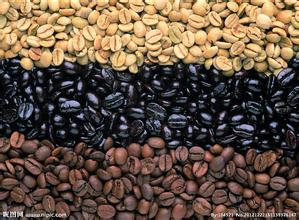The Classification of Coffee beans: a Sociological Analysis of the reasons for Starbucks' success
Botanical classification of coffee beans: the circular zone at the tip of the north-south regression line, which we call Coffee Zone or Coffee Belt. Because the area is rich in rich organic matter and volcanic ash soil, the average temperature is about 20 degrees, the average annual rainfall is between 1000 and 2000mm, and there is no large temperature difference during the year, so it has become an ideal place for coffee production. Growing coffee should be strictly protected against cold, hot and dry wind and defrosting.
After a very detailed analysis and introduction of the botanical classification of coffee beans above, can we still give friends some very comprehensive reference? I believe that the above introduction can get everyone's recognition of the botanical classification of coffee beans: the fruit of coffee is formed by the outer skin, pulp, endocarp, silver skin, and the seeds wrapped in the innermost layers (coffee beans). The seed is located in the center of the fruit, and the parts outside the seed are of little use. Generally speaking, there are two pairs of seeds in the fruit, but occasionally there is only one seed in the fruit, which is called fruit bean. In order to show symmetry, we call the fruit with two pairs of seeds as female beans. There are at least 40 "species" of the genus Coffee, among which the more practical cultivated species are three original species: plateau cultivation, lowland cultivation, and the botanical classification of the lowest cultivated coffee beans: the evergreen leaves of coffee trees are pointed at the tip, and the two are relatively grouped. The surface of the leaf is dark green, the back is light green, and the blooming flower is pure white. There are five stamens and one pistil in the flower, and the petals are usually five, but some have six or even eight petals. The flowers will give off a jasmine-like fragrance, but the flowers will wither in about three or four days. At first, the fruit is the same dark green as the leaf surface, but as it becomes more and more mature, it will turn yellow, then red, and finally crimson.

Important Notice :
前街咖啡 FrontStreet Coffee has moved to new addredd:
FrontStreet Coffee Address: 315,Donghua East Road,GuangZhou
Tel:020 38364473
- Prev

Varieties of coffee beans how long does it take for coffee trees to blossom
The Liberian species, the large seed species, is native to Liberia in Africa, as well as a few countries such as Malaysia. Its cultivation history is slightly shorter than the other two coffee trees. Liberian coffee trees are suitable for growing in lowlands. Its trunk is high and strong, it is 18 meters high, its leaves are large and tough, and its fruits and coffee beans are also very large. Its seed coat is close to the seed kernel and is scarlet when it is mature. Cited
- Next

How to grow Coffee Tree Seeds how to grow Coffee trees what kind of coffee does the sour kernel taste belong to?
Seedling emergence: planting in spring and spring, emergence in about 30 days; planting in summer, seedling emergence in 7-10. Although there is heating in winter, there is still a seasonal difference between a hot day and a hot day, so the time of emergence is also very long. Transplanting: when the true leaves of the seedlings grow forever, they can be transplanted. When selecting flowerpots, the diameter of the pot mouth should be the opposite of the crown diameter of the plant, and the root system should be released and can be opened. Selection of potted soil: I choose
Related
- Does Rose Summer choose Blue, Green or Red? Detailed explanation of Rose Summer Coffee plots and Classification in Panamanian Jade Manor
- What is the difference between the origin, producing area, processing plant, cooperative and manor of coffee beans?
- How fine does the espresso powder fit? how to grind the espresso?
- Sca coffee roasting degree color card coffee roasting degree 8 roasting color values what do you mean?
- The practice of lattes: how to make lattes at home
- Introduction to Indonesian Fine Coffee beans-- Java Coffee producing area of Indonesian Arabica Coffee
- How much will the flavor of light and medium roasted rose summer be expressed? What baking level is rose summer suitable for?
- Introduction to the characteristics of washing, sun-drying or wet-planing coffee commonly used in Mantenin, Indonesia
- Price characteristics of Arabica Coffee Bean Starbucks introduction to Manning Coffee Bean Taste producing area Variety Manor
- What is the authentic Yega flavor? What are the flavor characteristics of the really excellent Yejasuffi coffee beans?

